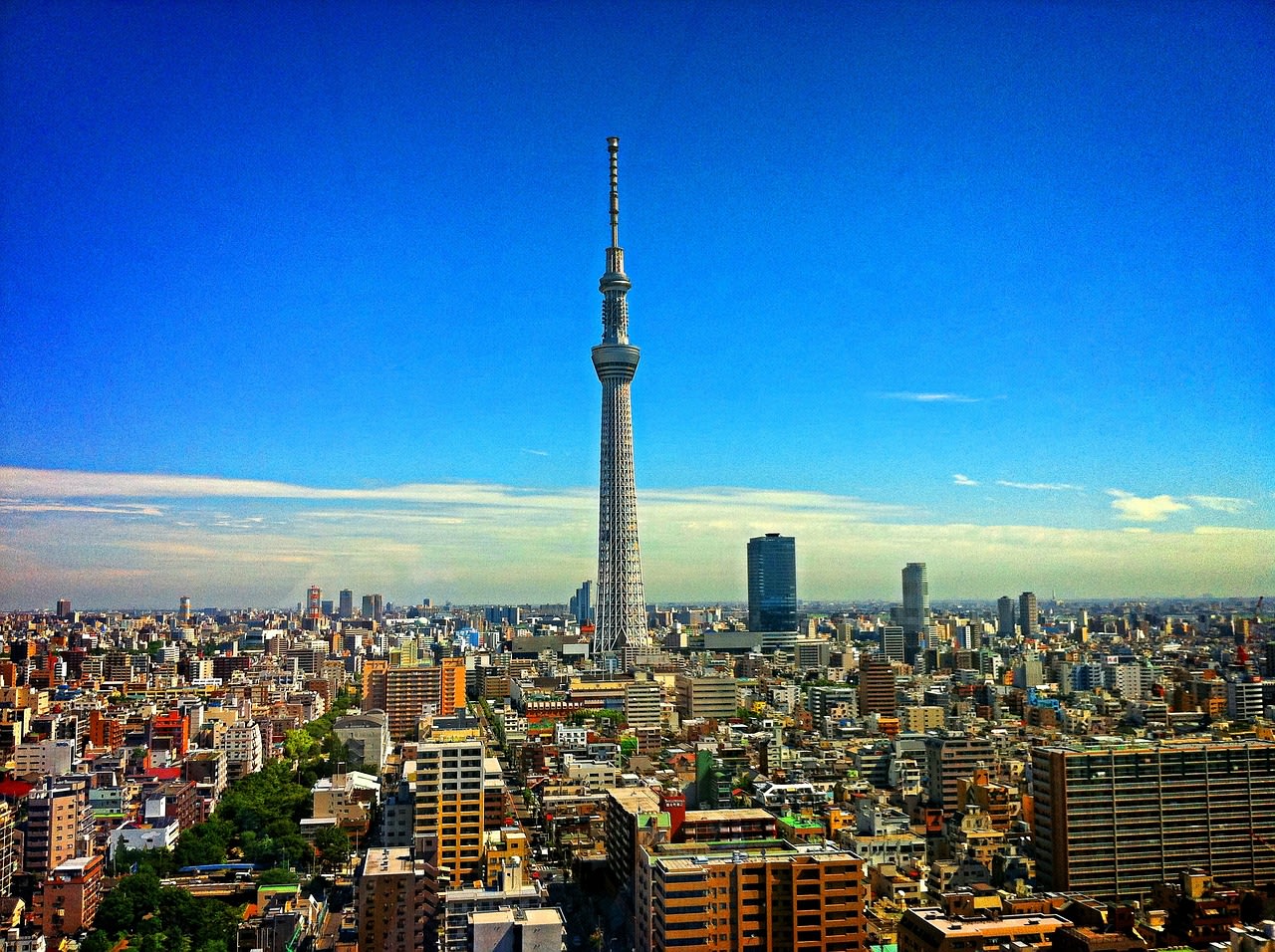Spotlight on Japan
The worldwide popularity of the territory’s anime, manga and video games has fuelled an appetite for international remakes of such properties
By Michael Rosser 18 Nov 2022

After two years of Covid-19-induced border closures, Japan finally reopened its doors to international productions in April 2022. Big-budget US features and high-end series have kept local crews busy throughout the pandemic due to innovative remote-working methods. But Japan is now looking to attract filmmakers back to the country with its iconic locations, highly regarded crew base and incentives provided by several regional film commissions. Until recently, an ongoing pilot programme offered an incentive for TV and film productions with a minimum spend of $7m (¥1bn).
“Now the government has changed the border rules, we can start to attract more features and series,” says Ruriko Sekine, secretary general and film commissioner at the Japanese Film Commission (JFC). The Tokyo-based JFC provides access to a network of more than 120 regional and municipal film commissions spanning the country, from Sapporo Film Commission in the mountainous north to Okinawa Film Office in the islands of the south. Tokyo Location Box gives advice on locations and permits on behalf of the Tokyo Metropolitan Government.
One project to have shot in Japan for two weeks in August was an upcoming Apple TV+ Godzilla and Titans series, tentatively titled Hourglass, produced by Legendary Television. A second season of US crime drama Tokyo Vice is also set to begin shooting at the end of 2022 for HBO Max. But the first major production to shoot following the reopening is Apple TV+ series Sunny from A24, which began seven months’ filming in July. Set 30 years in the future, the dark comedy stars Rashida Jones as an American living in Kyoto who is given a domestic robot after her husband and son disappear in a mysterious plane crash.
The production is working with Georgina Pope, producer and founder of Tokyo-based production service provider Twenty First City, and one of Japan’s bilingual go-to production gurus. “You don’t come to Japan unless you’ve got a Japan story,” says Pope. “It’s not an easy place to shoot nor the cheapest place to shoot — although no more expensive than London, Los Angeles or New York — but the world has this unending fascination with Japan. It’s a real love affair.”
This passion endured throughout the pandemic, leading international productions to adopt remote approaches to filming while the country remained closed. One such example was Sony’s Bullet Train, directed by David Leitch and starring Brad Pitt and Sandra Bullock. Background plates were shot in the country to provide the backdrop to the action, which takes place on one of Japan’s iconic bullet trains. Another was Apple TV+ sci-fi series Invasion, which had planned to send key crew to the country before the Covid-19 outbreak brought things to a halt. Instead, an all-Japanese crew of around 150 shot for 10 days in various locations around Tokyo while the director, showrunner, director of photography and script supervisor were among those to oversee the project remotely via an elaborate video conferencing set-up. Invasion’s executive producer Amy J Kaufman oversaw elements from New York but recalled vital lessons learned while location scouting and prepping for the shoot pre-pandemic.
“Tokyo is a city where you can’t just make things happen overnight,” says Kaufman. “You need to plan well in advance. You must also show a lot of respect and consideration as you enter every neighbourhood, and with the permissions that you need to request, much of it needing to be done in person.” This need for preparation is strongly reiterated by Twenty First City’s Pope. “The first thing I advise anyone looking to shoot in Japan is to add a least a month to everything,” she states. “We need more prep time here than anywhere else and that’s largely tied in with locations. You must be prepared to sip tea with landowners or building managers and really explain what you’re trying to do and how many people there will be. It’s important to relay the impact of the crew on neighbourhood parking and other local facilities, for example.”
For Invasion, various locations around Tokyo included the back alleys of downtown Kanda, glossy conference centres and the mountain temple Fukuzoji in Gunma prefecture, about three hours from the capital. Authenticity was important to the producers for the Japanese strand of the story, which depicts an alien invasion from the perspective of several people around the world. “We filmed an interior disco in Tokyo because it can be challenging to get a large group of Japanese extras in New York or London,” says Kaufman.
She adds that Japanese crew live up to their hard-working, highly skilled reputation. “They are so careful, precise, mindful and focused,” says Kaufman. “However, there are not a lot of English-speaking crew in Japan, so you need advanced time to pull that together.” There are around 200 bilingual crew working in Japan — a number that is growing — and while Pope says it is possible for Tokyo to host three major productions at one time, she stresses the importance of booking those who can speak English as soon as possible. “Japanese crews are well-trained, hard-working and efficient, and there’s a tendency here that when you do something you’ve got to do it really well,” says Pope. “Unfortunately, there’s not a huge number of English-speaking crew in Japan and it’s always very competitive to crew up on a big international show, which is another reason for a good long lead time.”
Challenges remain despite the borders reopening. The cost and time involved with securing entry for international crew is proving prohibitive along with restrictions that mean family members cannot join them — a big ask on a shoot of several months. But competition looks set to become fiercer than ever for local crew in the coming years as a wave of international productions is set to shoot in the country. “They’re primarily from the US and a lot of streaming projects,” says Pope. “But there are some movies and a couple of European projects too. There’s a lot coming.”
Locations and permits
Japan’s iconic locations are its biggest draw. The worldwide popularity of the territory’s anime, manga and video games has fuelled an appetite for international remakes of such properties. “Many filmmakers want to shoot in Japan to retain the atmosphere of the original stories,” says Ruriko Sekine, JFC secretary general and film commissioner.
That quest for authenticity led the producers of HBO Max’s true-crime series Tokyo Vice to set up shop in Tokyo. Reproducing the city on a soundstage or another Asian metropolis was never in consideration, according to the series’ US executive producer Alan Poul. “We were determined not to fake it,” he says. “Tokyo is a character in the story.”
Despite travel restrictions and Covid‑19 considerations during the shoot, production on Tokyo Vice has successfully wrapped thanks to its nearly all-Japanese crew. The pilot, helmed by Michael Mann and shot in 2020, brought in crew members from Hollywood but the plan was always to lean on Japanese talent as the series moved forward. “Covid just forced us to move that plan ahead faster than expected,” says Poul.
That mainly Japanese shooting crew is “as highly skilled as anybody I’ve ever worked with”, says Poul. He puts the crew’s “remarkably high level of skill in all aspects of filmmaking” down to Japan’s long tradition of filmmaking.
Working with a local crew can also offer more flexibility, notes Sekine. While Hollywood crews work up to 10-hour days, that is not the case for Japanese crews. As a result, on projects such as Snake Eyes, the Japanese crew were often on location for prep before their Hollywood counterparts. Poul notes this lack of spelled-out rules does not mean crews are being taken advantage of: Japanese directors will often make sure to schedule short days after long ones to give their teams a rest.
Sekine estimates there are about 200 bilingual crew members in Japan. However, it is worth noting the Chinese hit Detective Chinatown 3 and Snake Eyes shot simultaneously in 2020 and there was some strain as both productions tried to take those precious bilinguals.
Respect local traditions
Poul, who worked as an associate producer on Ridley Scott’s Black Rain in 1988 (Scott notoriously said he would never shoot in Japan again), says working in the country has improved greatly since those days. He underlines that those looking to shoot in Japan will get along better by respecting the unique filmmaking quirks and building relationships with locals rather than trying to do things the Hollywood way.
“Don’t come in with the assumption that if you draw enough money around people, things will go your way,” says Poul. “In Japan, there are aspects of interpersonal communication and networks of loyalty and obligation that are more important than cash.”
Tokyo-based Japan Film Commission provides access to a network of more than 120 regional and municipal film commissions spanning the country, from Sapporo Film Commission in the mountainous north to Okinawa Film Office in the islands of the south. Tokyo Location Box provides advice on locations and permits on behalf of the Tokyo Metropolitan Government.
Size matters
Japan stretches north to south across four main islands, allowing for a wealth of scenes and seasonality from snowy Hokkaido in the north to tropical Okinawa in the south. A dense network of high-speed rail and reasonably priced air travel makes getting around easy. Low crime rates, reliable transportation and excellent cuisine are benefits. Those shooting outside major cities should expect cramped but clean accommodation rather than luxury hotels.
Click here to see selected production service companies in Japan.
Click here to see the full filming guide for Japan.
Read the full report in our latest edition of World of Locations.
Latest news & features
Featured profiles
Promote your services with KFTV
Choose from three profile types - Basic, Silver and Gold
Create ProfileWe offer a range of display advertising opportunities.
Learn More


